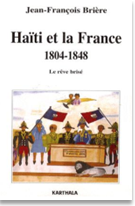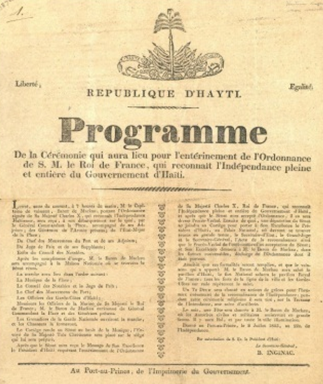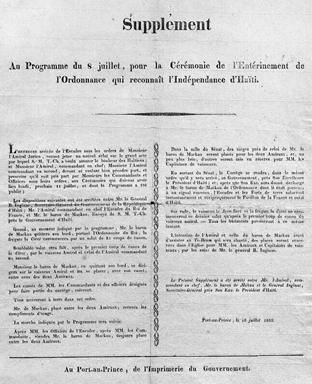 "The Double Debt" by Jean-François Brière, Ph.D.
"The Double Debt" by Jean-François Brière, Ph.D.
Brière is Professor of French Studies at the University of Albany. He is the author of Haïti et la France, 1804-1848: la rêve brisé (2008).
In 1814, the president of the Haitian republic, Alexandre Pétion, suggested to the French government that Haiti pay an indemnity to the former plantation owners whose property had been seized by the Haitian government when the country declared its independence in 1804. The goal was to undermine the plantation owners’ lobbying in France for a military expedition to retake control of the lost French colony. The French were uninterested at first, but they adopted the idea later on when they decided to recognize the country’s independence.
In 1825, under the threat of a naval blockade, Haiti was forced to accept the conditions under which France recognized Haitian independence. These terms included the payment by Haiti of a 150 million francs indemnity to be paid over five years as reparations to the former plantation owners. The documents below show the program of the ceremony marking in Port-au-Prince the recognition of Haitian independence by France. It included the participation of French naval officers.
Haiti was able to pay the first installment of the indemnity in 1825 by issuing bonds which were traded on the Paris Exchange. The "first debt" was the reparations owed to the plantation owners while the "second debt" was the money owed to the Haitian government’s bondholders. Beginning in 1826, Haiti was unable to pay both debts, angering French authorities who threatened the young republic with military action. In 1838, a new treaty lowered the reparations to 90 million francs (30 million of which were owed to bondholders.) Haiti did pay the entire sum, erasing both debts in 1883.

